-
 Bitcoin
Bitcoin $107,443.3008
-1.17% -
 Ethereum
Ethereum $2,494.2503
-0.63% -
 Tether USDt
Tether USDt $1.0003
0.00% -
 XRP
XRP $2.2496
2.23% -
 BNB
BNB $658.7569
0.63% -
 Solana
Solana $154.9826
1.94% -
 USDC
USDC $1.0000
0.01% -
 TRON
TRON $0.2799
1.07% -
 Dogecoin
Dogecoin $0.1659
-1.78% -
 Cardano
Cardano $0.5745
0.25% -
 Hyperliquid
Hyperliquid $39.7005
0.13% -
 Bitcoin Cash
Bitcoin Cash $519.5989
3.78% -
 Sui
Sui $2.7874
-2.40% -
 Chainlink
Chainlink $13.3762
-1.69% -
 UNUS SED LEO
UNUS SED LEO $9.0784
-0.64% -
 Avalanche
Avalanche $17.9846
-2.81% -
 Stellar
Stellar $0.2390
-0.06% -
 Toncoin
Toncoin $2.9028
0.25% -
 Shiba Inu
Shiba Inu $0.0...01147
-2.17% -
 Litecoin
Litecoin $86.6956
-1.27% -
 Hedera
Hedera $0.1508
-0.50% -
 Monero
Monero $322.6222
3.26% -
 Polkadot
Polkadot $3.4124
-2.99% -
 Dai
Dai $0.9999
0.00% -
 Bitget Token
Bitget Token $4.5434
-1.97% -
 Ethena USDe
Ethena USDe $1.0002
0.00% -
 Uniswap
Uniswap $7.1562
-2.61% -
 Aave
Aave $275.8830
-1.02% -
 Pepe
Pepe $0.0...09790
-4.04% -
 Pi
Pi $0.5018
-5.09%
How to calculate the liquidation price of MEXC contract? Is the risk higher with a larger position?
To calculate the liquidation price for MEXC contracts, use the formula: Entry Price × (1 - Maintenance Margin Rate + Maintenance Margin Rate / Leverage) for long positions.
May 05, 2025 at 06:43 am
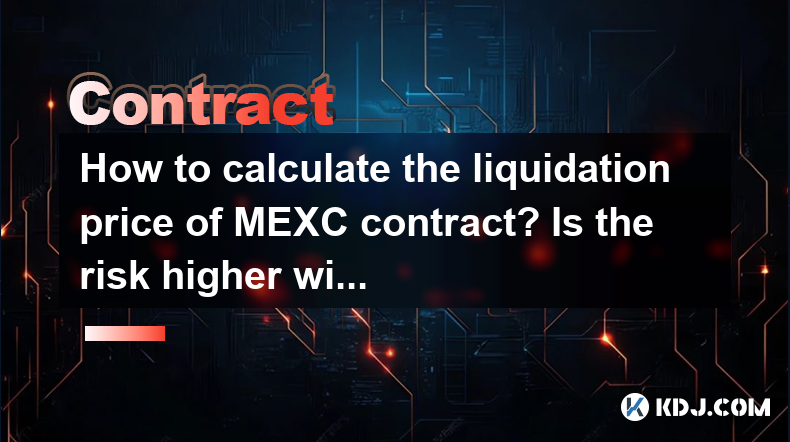
Understanding how to calculate the liquidation price of a MEXC contract is crucial for managing risk in cryptocurrency trading. The liquidation price is the point at which a position is automatically closed by the exchange to prevent further losses. This article will guide you through the process of calculating the liquidation price for MEXC contracts and discuss whether a larger position increases the risk.
What is a Liquidation Price?
The liquidation price is the price at which a trader's position is forcibly closed by the exchange. This mechanism is designed to protect both the trader and the exchange from negative account balances. For MEXC contracts, the liquidation price depends on several factors, including the entry price, the amount of leverage used, and the maintenance margin rate.
Calculating the Liquidation Price for Long Positions
To calculate the liquidation price for a long position on MEXC, you need to consider the following formula:
[ \text{Liquidation Price (Long)} = \text{Entry Price} \times (1 - \text{Maintenance Margin Rate} + \text{Maintenance Margin Rate} / \text{Leverage}) ]
Here’s how to apply this formula:
- Entry Price: The price at which you opened your long position.
- Maintenance Margin Rate: The minimum amount of margin required to keep the position open, expressed as a percentage.
- Leverage: The amount of leverage you are using, which amplifies both gains and losses.
For example, if you enter a long position at an entry price of $10,000, with a maintenance margin rate of 0.5% and using 10x leverage, the liquidation price would be calculated as follows:
[ \text{Liquidation Price (Long)} = 10,000 \times (1 - 0.005 + 0.005 / 10) = 10,000 \times 0.9955 = 9,955 ]
So, the liquidation price for this long position would be $9,955.
Calculating the Liquidation Price for Short Positions
The liquidation price for a short position on MEXC can be calculated using the following formula:
[ \text{Liquidation Price (Short)} = \text{Entry Price} \times (1 + \text{Maintenance Margin Rate} - \text{Maintenance Margin Rate} / \text{Leverage}) ]
Here’s how to apply this formula:
- Entry Price: The price at which you opened your short position.
- Maintenance Margin Rate: The minimum amount of margin required to keep the position open, expressed as a percentage.
- Leverage: The amount of leverage you are using.
For example, if you enter a short position at an entry price of $10,000, with a maintenance margin rate of 0.5% and using 10x leverage, the liquidation price would be calculated as follows:
[ \text{Liquidation Price (Short)} = 10,000 \times (1 + 0.005 - 0.005 / 10) = 10,000 \times 1.0045 = 10,045 ]
So, the liquidation price for this short position would be $10,045.
How to Use MEXC’s Tools to Calculate Liquidation Price
MEXC provides tools within its trading platform to help you calculate the liquidation price. Here’s how to use them:
- Open the MEXC trading platform and navigate to the contract trading section.
- Select the contract you are interested in trading.
- Input your desired leverage and position size.
- The platform will display the estimated liquidation price based on the current market conditions and your input.
Using these tools can save time and ensure accuracy in your calculations.
Does a Larger Position Increase the Risk?
A larger position does indeed increase the risk, primarily because it amplifies both potential gains and losses. Here’s why:
- Increased Exposure: A larger position means you are exposed to more significant market movements. Even small price changes can result in substantial profits or losses.
- Higher Margin Requirements: Larger positions require more margin to maintain, which can tie up more of your capital and increase the risk of a margin call.
- Leverage Impact: When using leverage, a larger position magnifies the effect of leverage, making your account more susceptible to liquidation.
For example, if you have a $1,000 position with 10x leverage, your total exposure is $10,000. A 1% move in the market will result in a $100 gain or loss. However, if you increase your position to $10,000 with the same leverage, your total exposure becomes $100,000, and a 1% move in the market will result in a $1,000 gain or loss.
Managing Risk with Larger Positions
To manage the increased risk associated with larger positions, consider the following strategies:
- Diversification: Spread your investments across different assets to reduce the impact of a single asset’s price movement.
- Stop-Loss Orders: Use stop-loss orders to automatically close your position if the market moves against you, limiting potential losses.
- Regular Monitoring: Keep a close eye on your positions and the market to make timely adjustments.
- Risk-Reward Analysis: Evaluate the potential reward against the risk before entering a larger position.
By implementing these strategies, you can better manage the risks associated with larger positions on MEXC.
Frequently Asked Questions
Q: Can I change the liquidation price after opening a position?
A: No, the liquidation price is set when you open a position and cannot be changed afterward. However, you can adjust your position size or add more margin to reduce the risk of liquidation.
Q: What happens if the market price reaches my liquidation price?
A: If the market price reaches your liquidation price, your position will be automatically closed by the exchange to prevent further losses. Any remaining margin will be returned to your account.
Q: How can I avoid liquidation on MEXC?
A: To avoid liquidation, you can add more margin to your position, reduce your leverage, or close part of your position to decrease your exposure. Regularly monitoring your positions and using stop-loss orders can also help manage the risk of liquidation.
Q: Does MEXC charge fees for liquidated positions?
A: Yes, MEXC may charge a liquidation fee, which is typically a small percentage of the position value. This fee is used to cover the costs associated with the liquidation process.
Disclaimer:info@kdj.com
The information provided is not trading advice. kdj.com does not assume any responsibility for any investments made based on the information provided in this article. Cryptocurrencies are highly volatile and it is highly recommended that you invest with caution after thorough research!
If you believe that the content used on this website infringes your copyright, please contact us immediately (info@kdj.com) and we will delete it promptly.
- North Korea's Cyber Plot: Funding Weapons Development Through Virtual Heists
- 2025-07-01 10:30:12
- Undervalued Crypto Tokens: Compute Tokens Stealing the Show?
- 2025-07-01 10:50:12
- XRPL EVM Sidechain: Unleashing Smart Contracts and Cross-Chain DeFi on XRP
- 2025-07-01 10:30:12
- Archaeology Unearths Ancient Coin Moulds: A Glimpse into Indo-Greek Trade in Gujarat
- 2025-07-01 10:50:12
- MAGACOIN FINANCE: Altcoin Returns & the Early Adoption Advantage
- 2025-07-01 11:10:12
- Neo Pepe: Is This Presale the Crypto Opportunity You've Been Waiting For?
- 2025-07-01 11:10:12
Related knowledge
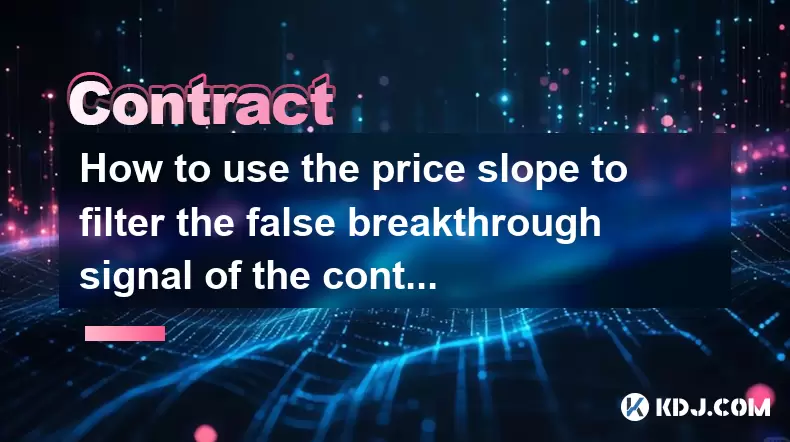
How to use the price slope to filter the false breakthrough signal of the contract?
Jun 20,2025 at 06:56pm
Understanding the Concept of Price Slope in Contract TradingIn contract trading, especially within cryptocurrency derivatives markets, price slope refers to the rate at which the price changes over a specific time period. It helps traders assess the strength and sustainability of a trend. A steep slope may indicate strong momentum, while a shallow slope...
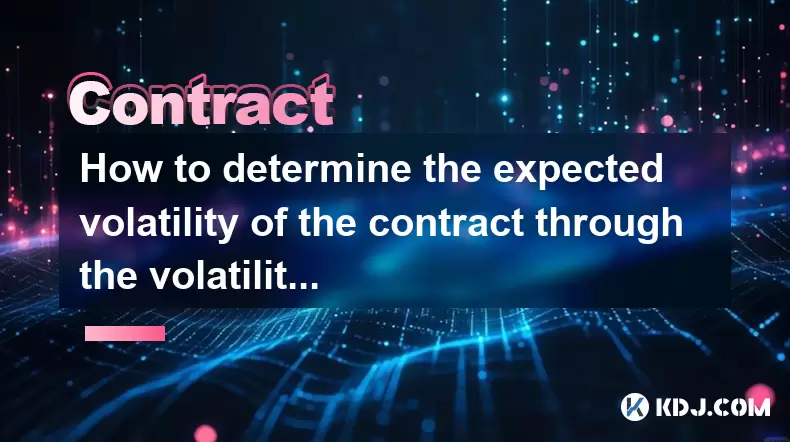
How to determine the expected volatility of the contract through the volatility cone?
Jun 19,2025 at 12:28pm
Understanding the Basics of Volatility in Cryptocurrency ContractsIn the realm of cryptocurrency trading, volatility is a key metric that traders use to assess potential risk and reward. When dealing with futures contracts, understanding how volatile an asset might become over time is crucial for position sizing, risk management, and strategy developmen...
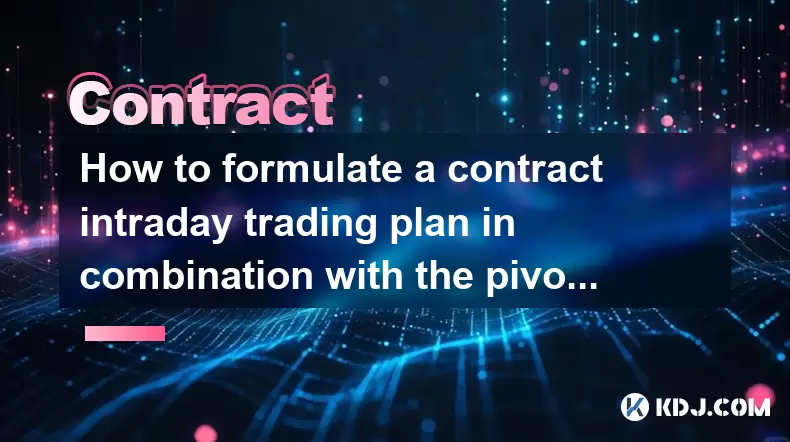
How to formulate a contract intraday trading plan in combination with the pivot point system?
Jun 21,2025 at 03:42pm
Understanding the Basics of Pivot Points in Cryptocurrency TradingPivot points are technical analysis tools used by traders to identify potential support and resistance levels. These levels are calculated using the previous day's high, low, and closing prices. In the context of cryptocurrency trading, where markets operate 24/7, pivot points help trader...
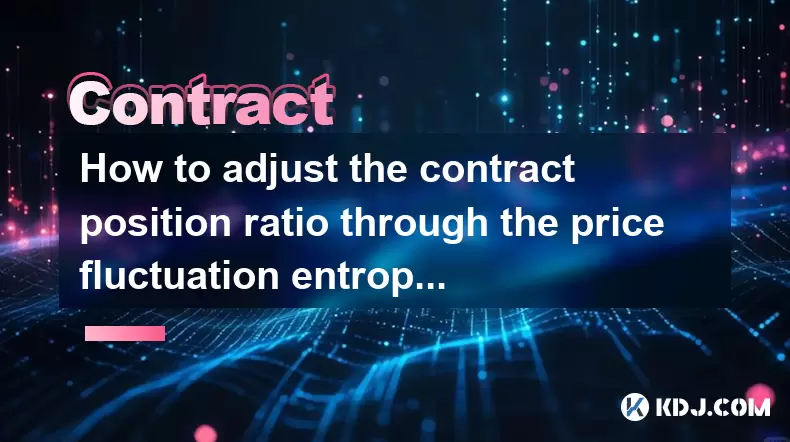
How to adjust the contract position ratio through the price fluctuation entropy?
Jun 22,2025 at 11:42am
Understanding Price Fluctuation Entropy in Cryptocurrency ContractsIn the world of cryptocurrency futures trading, price fluctuation entropy is a relatively new concept used to measure market volatility and uncertainty. It derives from information theory, where entropy refers to the degree of randomness or unpredictability in a system. In crypto contrac...
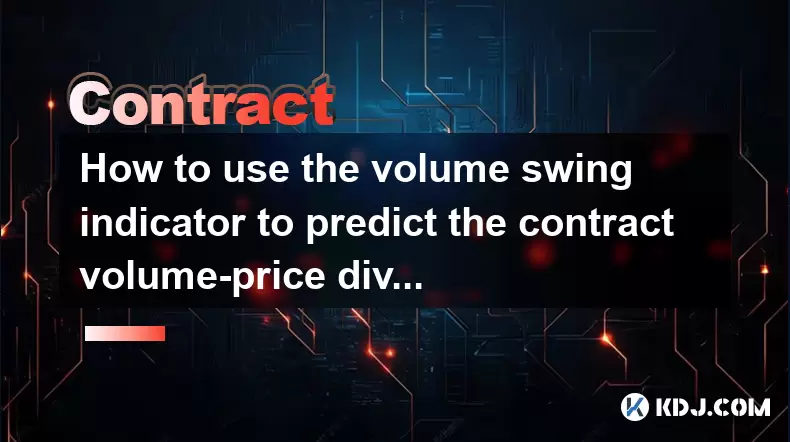
How to use the volume swing indicator to predict the contract volume-price divergence?
Jun 18,2025 at 11:42pm
Understanding the Volume Swing IndicatorThe volume swing indicator is a technical analysis tool used primarily in cryptocurrency trading to evaluate changes in volume over time. Unlike price-based indicators, this metric focuses solely on trading volume, which can provide early signals about potential market reversals or continuations. The key idea behi...
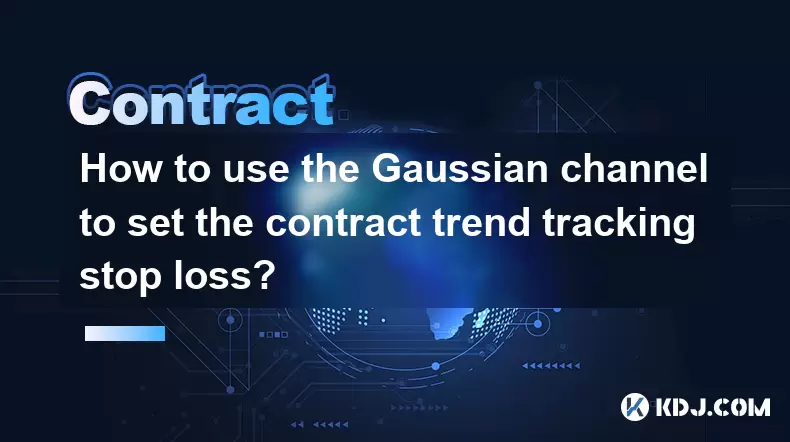
How to use the Gaussian channel to set the contract trend tracking stop loss?
Jun 18,2025 at 09:21pm
Understanding the Gaussian Channel in Cryptocurrency TradingThe Gaussian channel is a technical indicator used primarily in financial markets, including cryptocurrency trading, to identify trends and potential reversal points. It is based on statistical principles derived from the normal distribution, commonly known as the Gaussian distribution or bell ...

How to use the price slope to filter the false breakthrough signal of the contract?
Jun 20,2025 at 06:56pm
Understanding the Concept of Price Slope in Contract TradingIn contract trading, especially within cryptocurrency derivatives markets, price slope refers to the rate at which the price changes over a specific time period. It helps traders assess the strength and sustainability of a trend. A steep slope may indicate strong momentum, while a shallow slope...

How to determine the expected volatility of the contract through the volatility cone?
Jun 19,2025 at 12:28pm
Understanding the Basics of Volatility in Cryptocurrency ContractsIn the realm of cryptocurrency trading, volatility is a key metric that traders use to assess potential risk and reward. When dealing with futures contracts, understanding how volatile an asset might become over time is crucial for position sizing, risk management, and strategy developmen...

How to formulate a contract intraday trading plan in combination with the pivot point system?
Jun 21,2025 at 03:42pm
Understanding the Basics of Pivot Points in Cryptocurrency TradingPivot points are technical analysis tools used by traders to identify potential support and resistance levels. These levels are calculated using the previous day's high, low, and closing prices. In the context of cryptocurrency trading, where markets operate 24/7, pivot points help trader...

How to adjust the contract position ratio through the price fluctuation entropy?
Jun 22,2025 at 11:42am
Understanding Price Fluctuation Entropy in Cryptocurrency ContractsIn the world of cryptocurrency futures trading, price fluctuation entropy is a relatively new concept used to measure market volatility and uncertainty. It derives from information theory, where entropy refers to the degree of randomness or unpredictability in a system. In crypto contrac...

How to use the volume swing indicator to predict the contract volume-price divergence?
Jun 18,2025 at 11:42pm
Understanding the Volume Swing IndicatorThe volume swing indicator is a technical analysis tool used primarily in cryptocurrency trading to evaluate changes in volume over time. Unlike price-based indicators, this metric focuses solely on trading volume, which can provide early signals about potential market reversals or continuations. The key idea behi...

How to use the Gaussian channel to set the contract trend tracking stop loss?
Jun 18,2025 at 09:21pm
Understanding the Gaussian Channel in Cryptocurrency TradingThe Gaussian channel is a technical indicator used primarily in financial markets, including cryptocurrency trading, to identify trends and potential reversal points. It is based on statistical principles derived from the normal distribution, commonly known as the Gaussian distribution or bell ...
See all articles

























































































